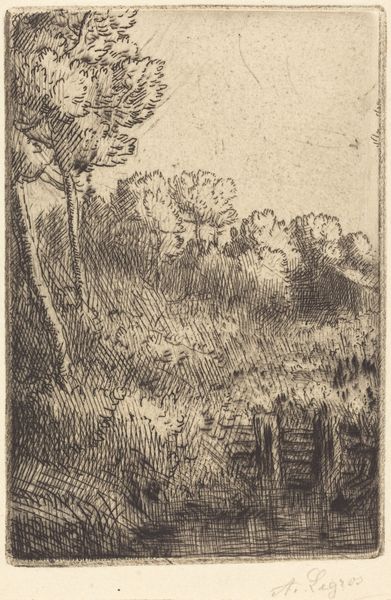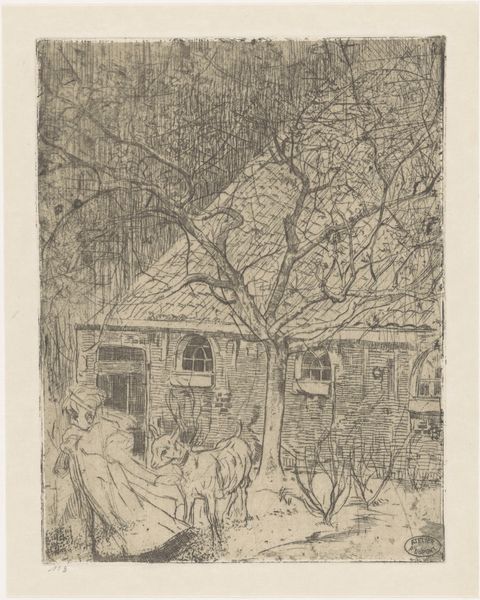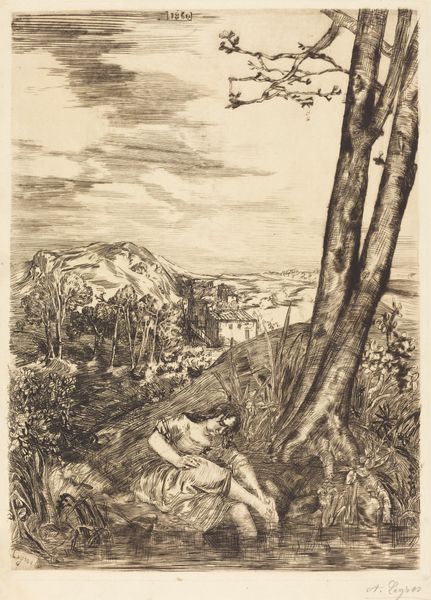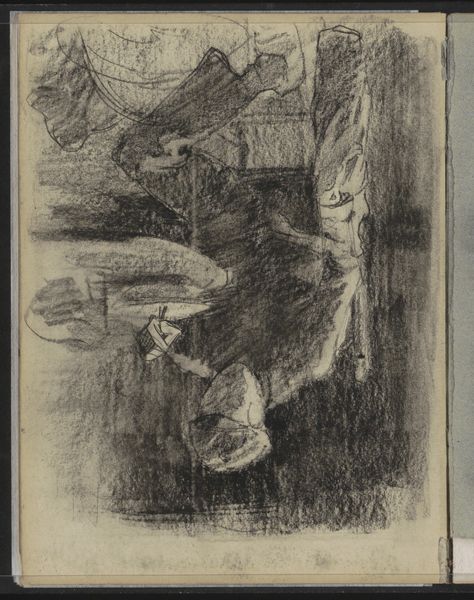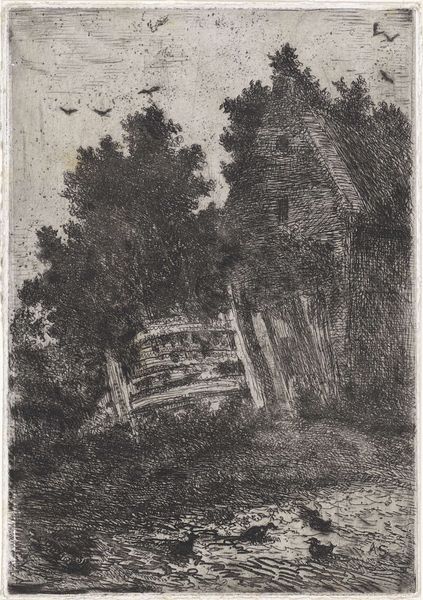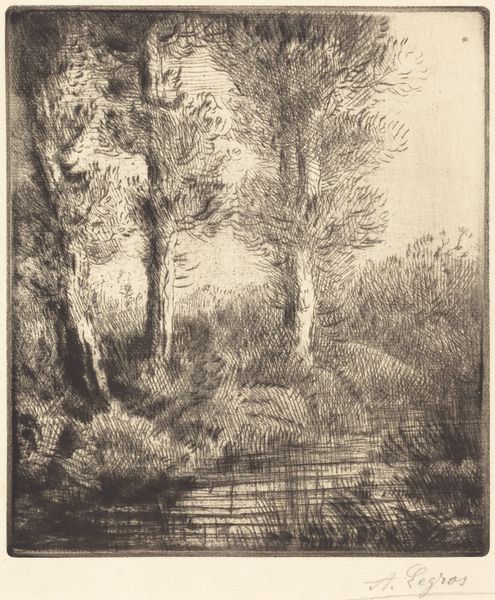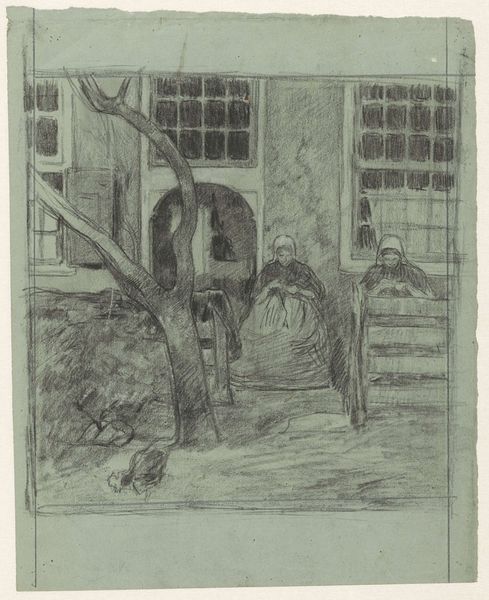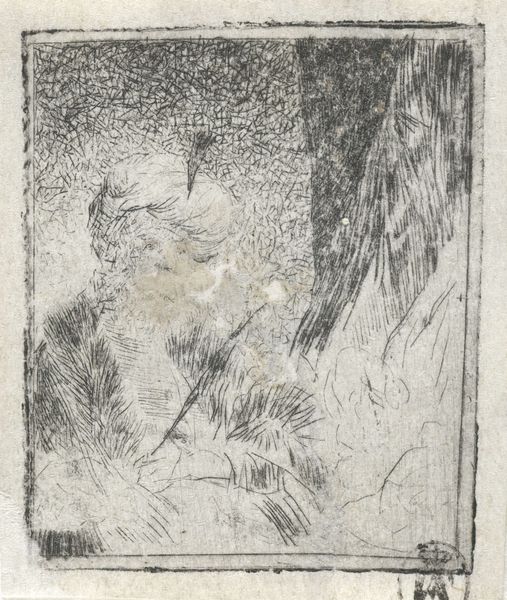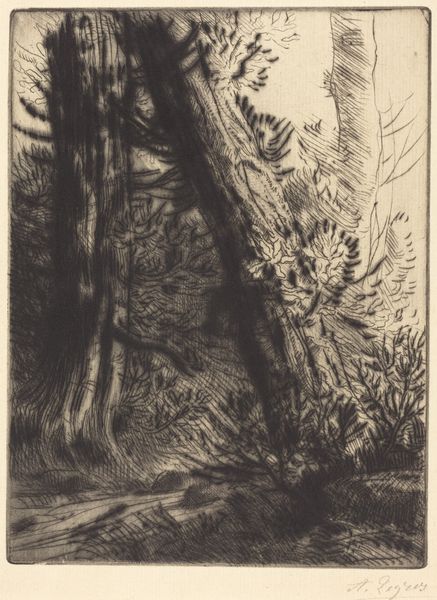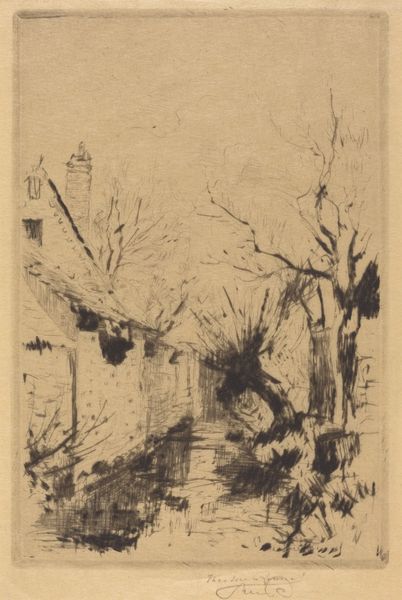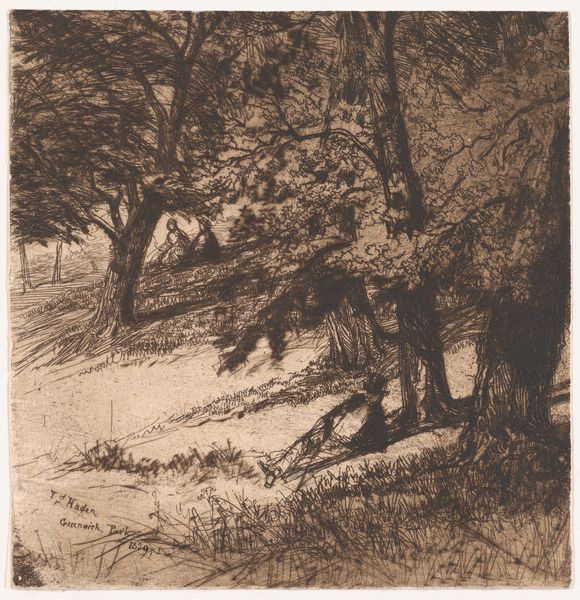
A Woman Emptying a Wheelbarrow (Femme vidant une brouette) 1880
0:00
0:00
drawing, print, etching
#
drawing
# print
#
impressionism
#
etching
#
landscape
#
pencil drawing
#
genre-painting
Dimensions: plate: 31.8 x 23 cm (12 1/2 x 9 1/16 in.) sheet: 51.5 x 35.7 cm (20 1/4 x 14 1/16 in.)
Copyright: National Gallery of Art: CC0 1.0
Curator: Oh, what a lovely etching! Pissarro’s “A Woman Emptying a Wheelbarrow,” from 1880. Editor: It has a beautiful quietude. Almost a memory, or something fading from view, like the past itself. I am immediately drawn to the figure of the woman, central, yet almost consumed in soft textures. Curator: Right, that disappearing act is classic Pissarro, even in print form. Remember, he was always experimenting. This is etching, so think of a metal plate meticulously scored, inked, and pressed. What’s intriguing here is how he evokes the tactile sensation of the countryside with these fine lines. Editor: Absolutely! It reads less like reportage and more like the echo of labor. The wheelbarrow, positioned forward in the frame, takes on a totemic significance. Consider its ancient roots, across cultures— the carrying of earthly burdens and shared dreams... a link between body, earth, and fate. Curator: Beautifully put! Pissarro wasn’t just painting peasants; he was grounding himself in something essential, you know? Think of his anarchist beliefs… that respect for manual labor and rural life was at the very core. He wasn’t romanticizing poverty; he was finding beauty in simple existence. Editor: Precisely, because it seems to bypass narrative in favor of presenting a sustained image of rural endurance. It's less a moment captured than a statement on human purpose amidst natural cycles. We are both present and yet somehow irrelevant to the landscape. It's both grounding and unsettling, I find. Curator: Yeah, I love that you sensed the “unsettling”. The haziness makes it less concrete, more a fleeting, subjective experience. Like a dream about work and place. Pissarro wasn’t trying to nail down reality but rather how reality feels, that fleeting, visceral experience of being alive, and outside, and working. Editor: The image definitely speaks volumes about the intersection of labor, landscape, and symbolic meaning. Curator: What a remarkable little meditation on rural life from Pissarro. Editor: Agreed. There's profound meaning in the seemingly mundane.
Comments
No comments
Be the first to comment and join the conversation on the ultimate creative platform.
